By 1995, Samsung already had a few years under their belt when dealing with standard 3.5″ PATA desktop drives. Nonetheless, Samsung were not known for their reliability in this period, much unlike their late-90’s era of designs. Performance wasn’t even something to consider with these, having a high rate of failure at the time of release, alongside being quite fragile.
Finding one in operational condition in this day and age is a difficult task, the two of these demonstrating that as clear as day, with both of these examples being unusable.
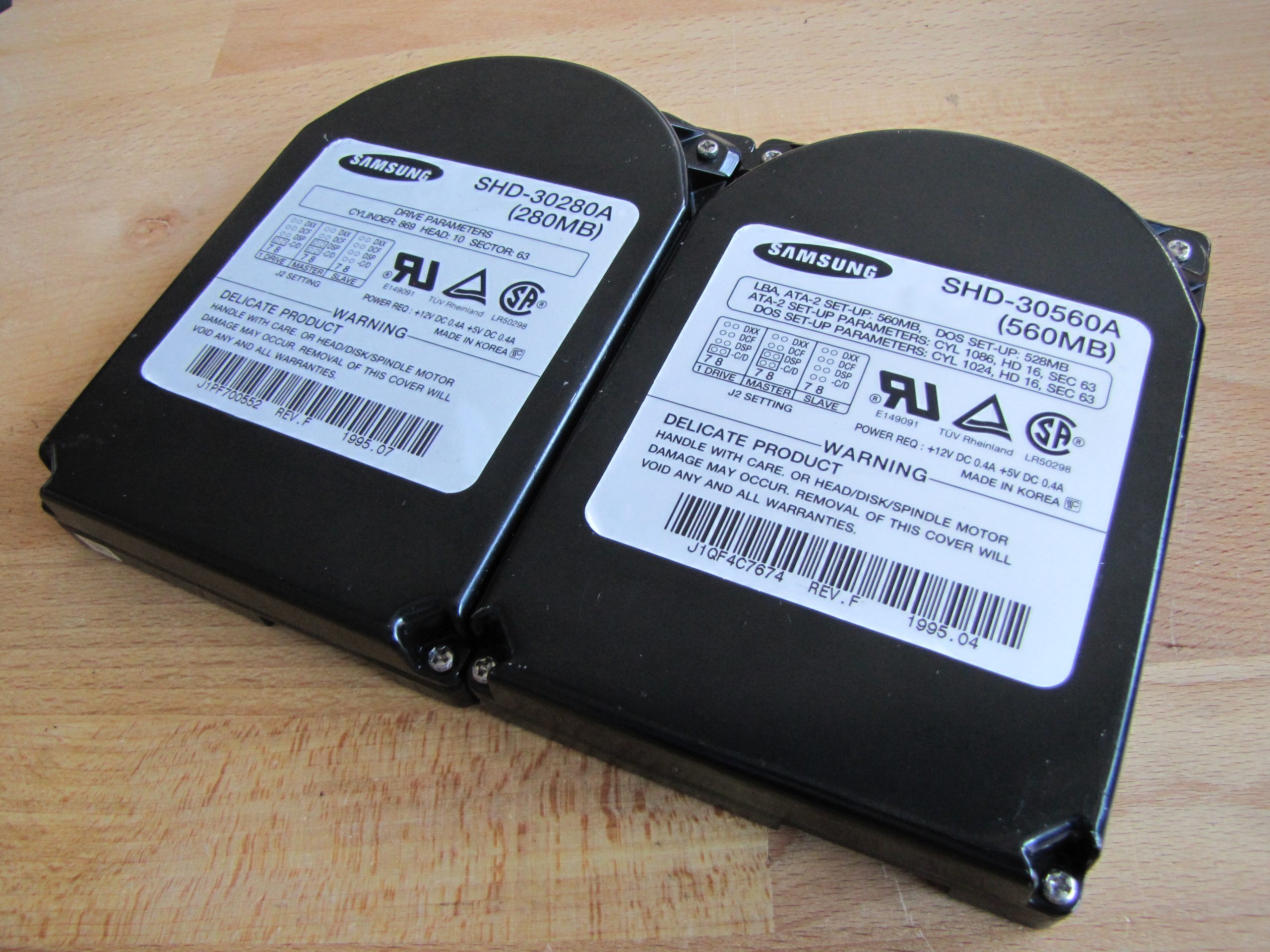
Featuring a very deep black painted cast construction, these are striking from the onset. This series was available in three models, the SHD-30280A featuring a single platter at 280MB in capacity, the SHD-30420A with two platters, three heads and 420MB in capacity and finally the SHD-30560A with two platters and four heads, totalling 560MB in capacity.
Both models shown above are covered seperately below, being the lowest and highest end offerings at the time from Samsung.
Samsung SHD-30280A
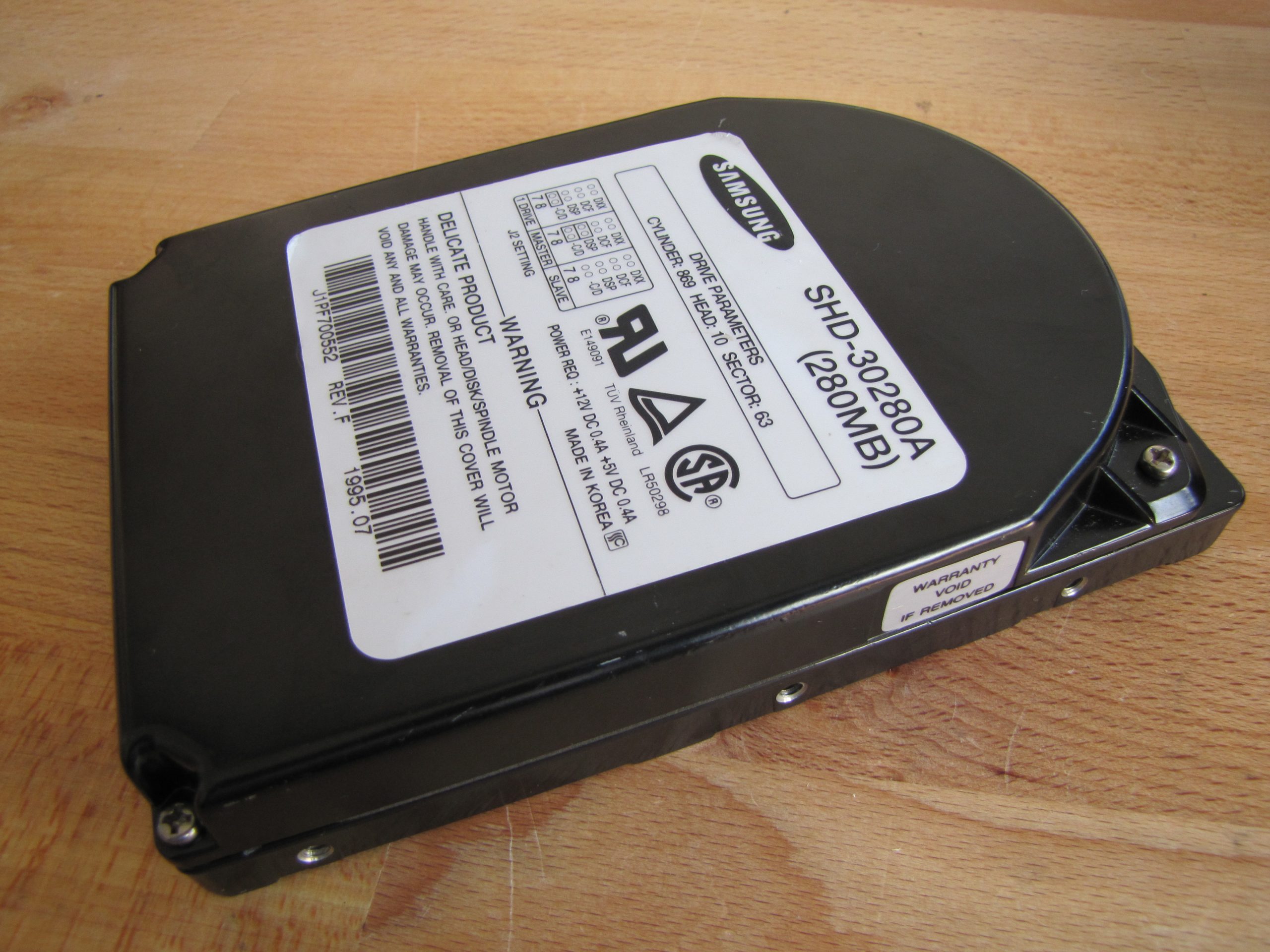
Drive Attributes ------------------------------------- Samsung Apollo280 SHD-30280A ------------------------------------- Capacity 280MB Mfc Date 1995-07 Format 3.5" Interface PATA Platters 1 Heads 2 Cache 128KB RPM 3600 CHS 869/10/63 (translated) Origin South Korea (SEC) Codename Apollo280 -------------------------------------
Starting off with the lower-end model of the two, this one features a lone platter, 280MB in density. These were manufactured in Samsung’s factory in South Korea, much the same as all of Samsung’s drive offerings until being dissolved by Seagate (although, Samsung did also manufacture numerous models in China, later on).

Samsung certainly knew how to do labels right during this period, listing everything you’d need to know (aside from spindle RPM). CHS parameters, jumper settings, date of manufacture, what more could you ask for?

The PCB leaves much to be addressed, but the layout is neat. Here we can see Samsung’s codename address, APOLLO5-3, with revision C.


Splitting this into two halves, there’s an Adaptec interface controller, alongside Samsung’s self-supplied 128KB of cache/buffer memory. The old three stars branding remained present on some IC’s, Samsung translating from “three stars” in Korean, after all.
Jumper settings are as follows:
+---+ +---+ +---+
|o o| |o o| |o o|
|o o|DCF |o o|DCF |o o|DCF
|o o|DSP |o o|DSP |xxx|DSP
|o o|-C/D |xxx|-C/D |xxx|-C/D
+---+ +---+ +---+
2 Drive 1 Drive 2 Drive
SLAVE MASTER

Motorolla supply the main controller IC, with a few other chips being present, notably a Hitachi-supplied motor controller. There’s an LED to the right of header J3 (head-stack assembly interface), neat!

Nothing interesting on this side. It’s what you’d expect, aside from Samsung producing these in-house, being their own supplier. Samsung already had a huge supply chain in the 90’s, unsurprisingly!
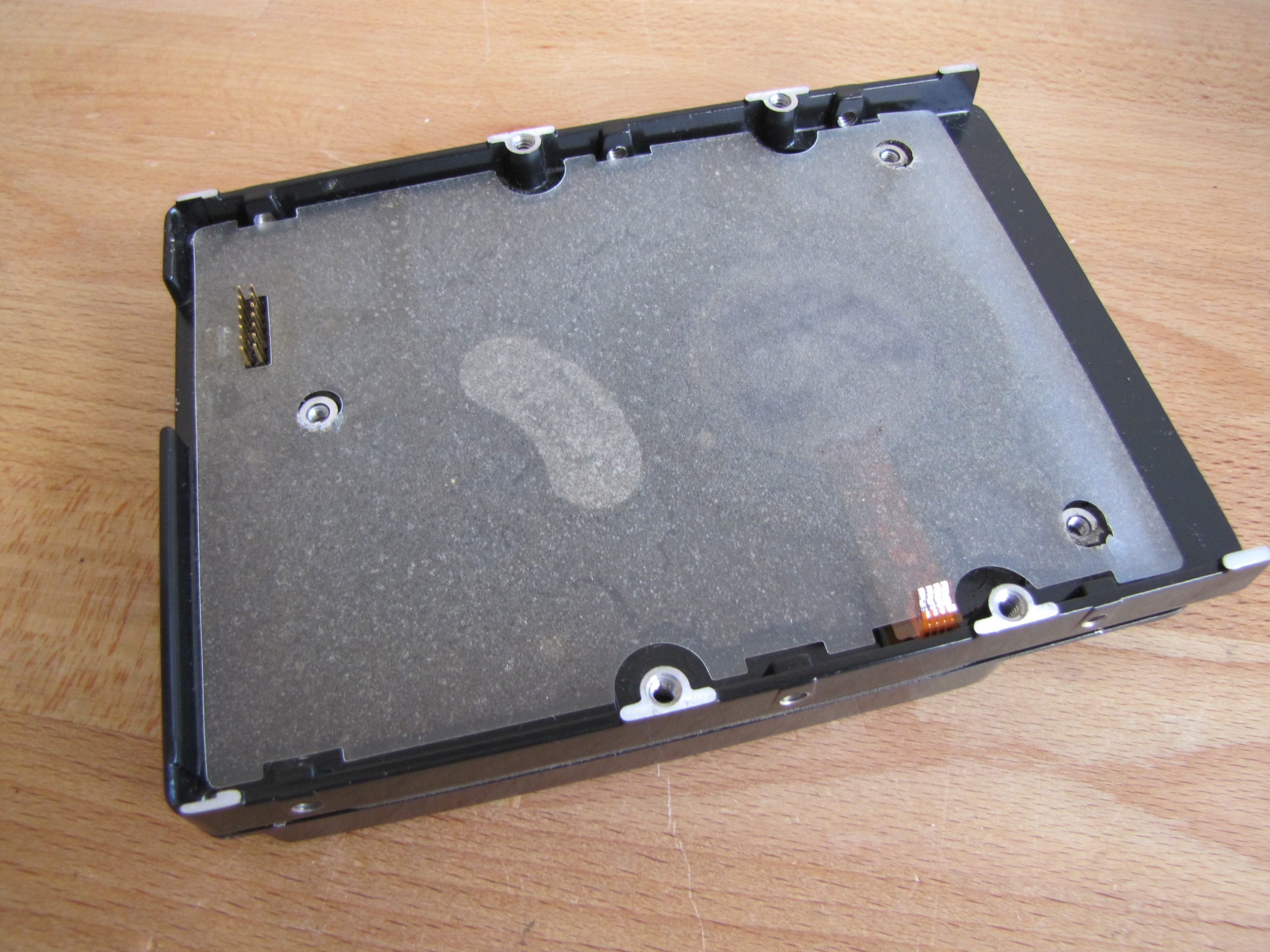
There’s some insulation, alongside some foam.
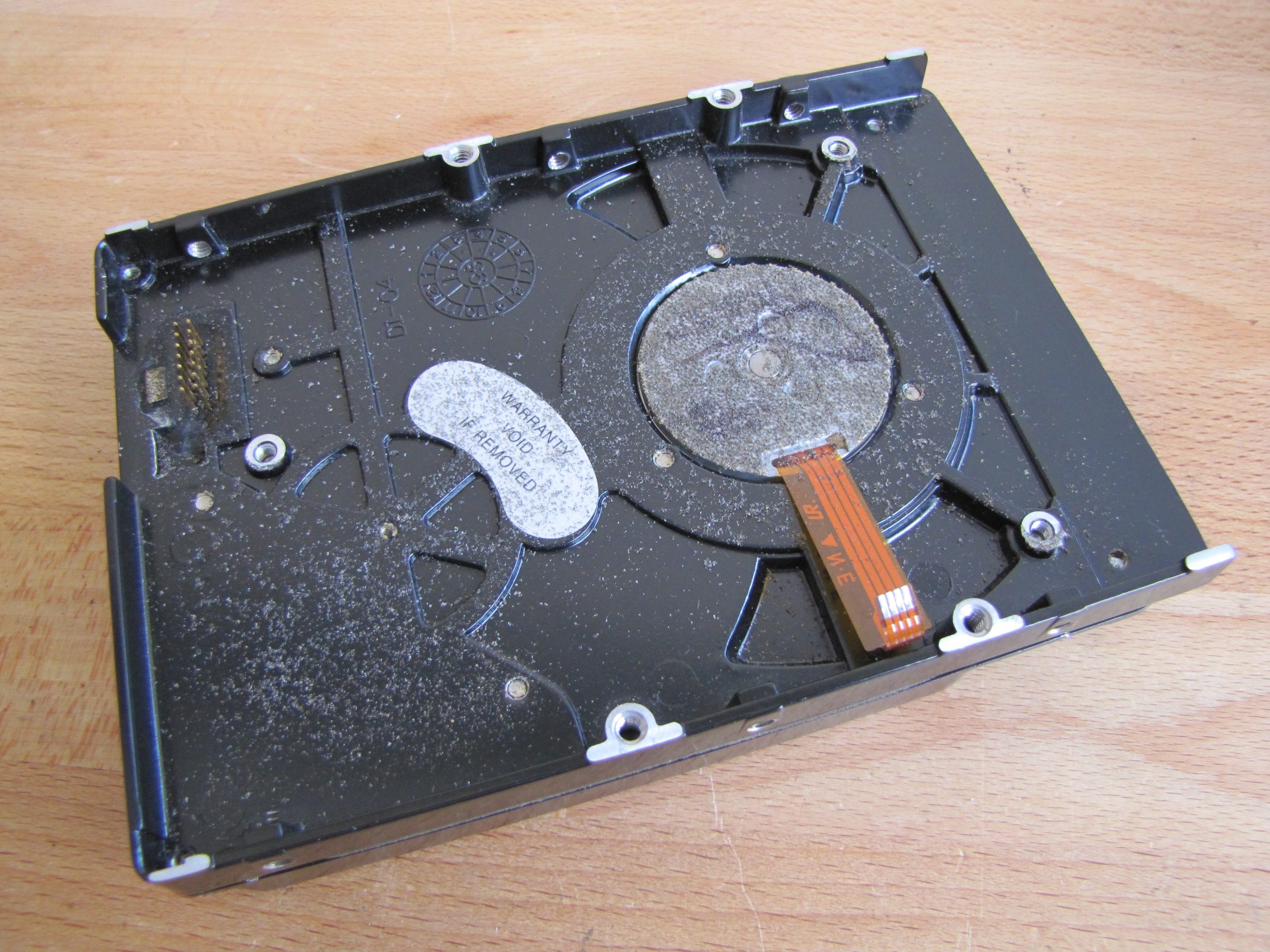
The foam has disintegrated, leaving behind a fresh trail of sticky debris. Lovely.
The breather hole is on the underside of these drives, which is looked at in more detail with the SHD-30560A below, where the breather hole isn’t full of foam gunk.

Removing the sticky mess, even with isopropyl alcohol, isn’t an easy feat. Nonetheless, it reveals JVC were the spindle motor supplier for this one. Will that be the case with all of these though? More to be seen below…
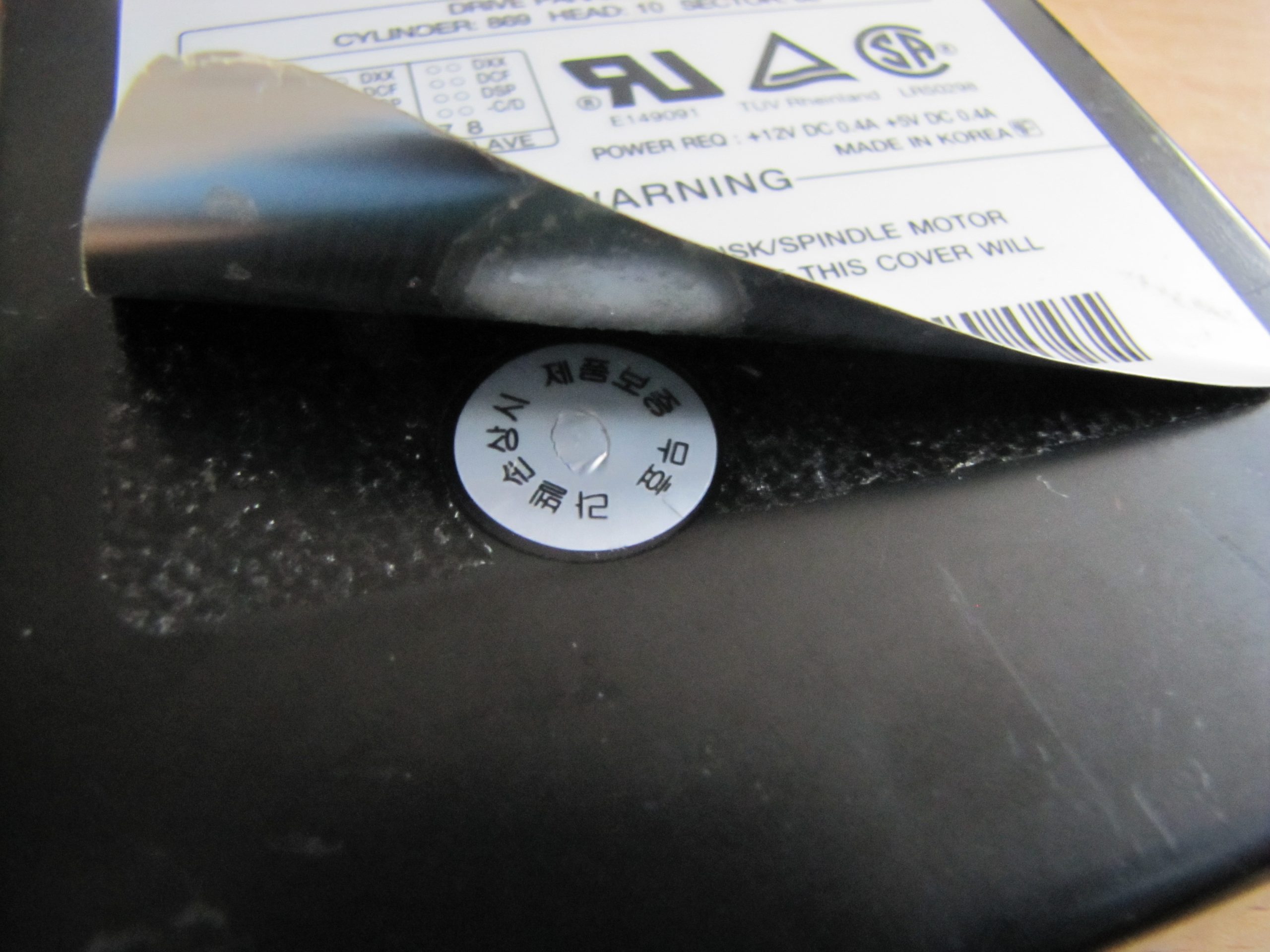
Removing hidden screws isn’t an easy feat without damaging the label (of which all label images above and below are post-disassembly), but some patience and a heat gun can go a long way.
The warranty breaking screw stickers are in Korean on this drive! An interesting difference to the SHD-30560A below…

Taking a peek inside reveals a dark actuator arm, which is quite a nice feature of these models. The construction is reasonably simple, the single platter being a major counterpart of that.

It’s beautiful, isn’t it?
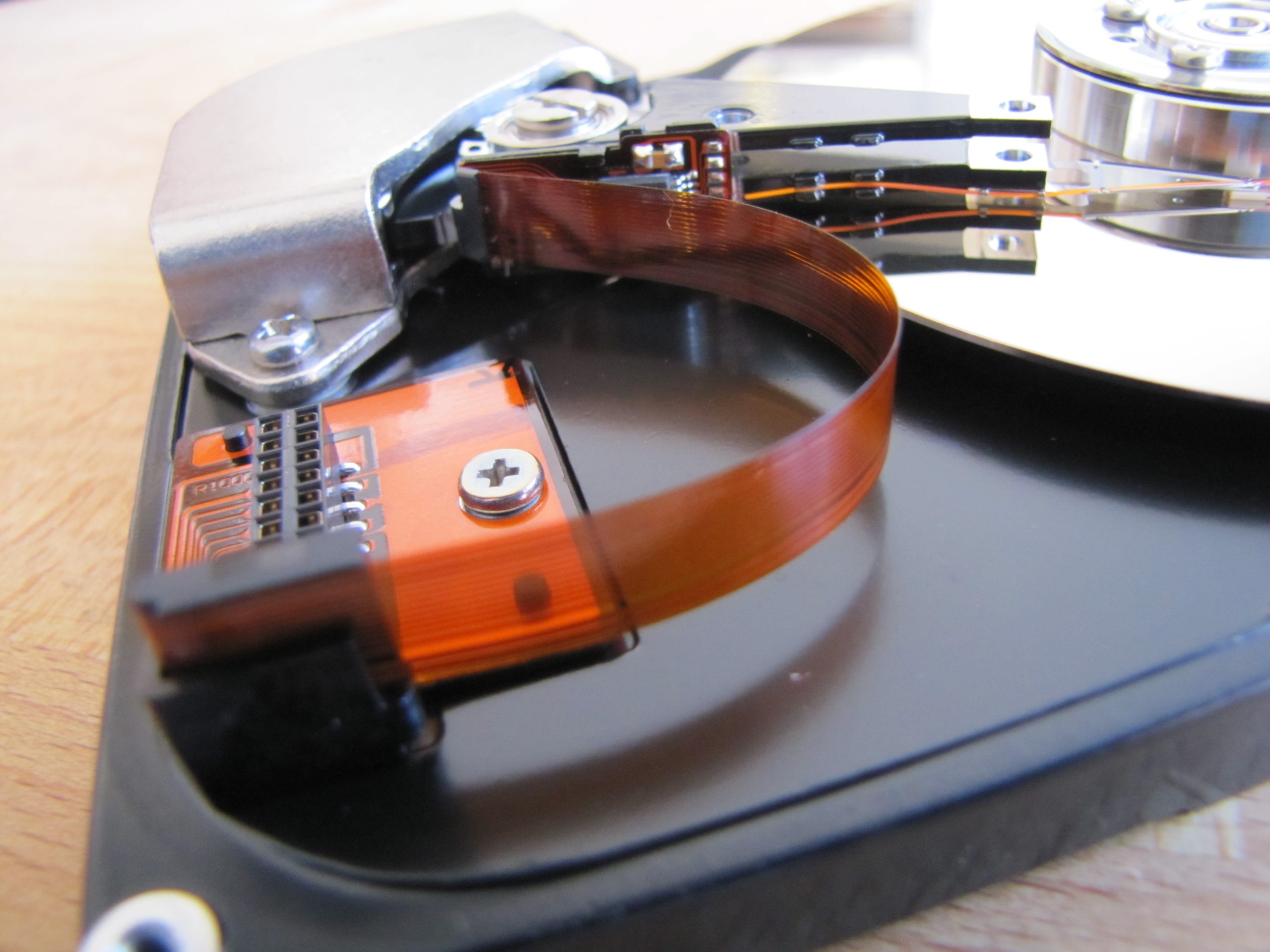


No rubber to be found! Thanks Samsung. While it may look like rubber from this perspective, the black bumper material is just hard plastic. Disintegrating bumpers aren’t an issue with these, although the drive probably wouldn’t have lived long enough if it were an issue.

With the SHD-30280A out of the way, onwards we go onto the higher-end SHD-30560A.
Samsung SHD-30560A

Drive Attributes ------------------------------------- Samsung Apollo560 SHD-30560A ------------------------------------- Capacity 560MB Mfc Date 1995-04 Format 3.5" Interface PATA Platters 2 Heads 4 Cache 128KB RPM 3600 CHS 1024/16/63 (translated) Origin South Korea (SEC) Codename Apollo560 -------------------------------------
The highest end offering features two platters, maintaining identical density to the SHD-30280A at 280MB per platter. Having four heads finalises this drive out at a total capacity of 560MB.

There’s few differences compared to the SHD-30280A above, aside from showing more drive parameters as LBA support is present with this model, surpassing the 528MB limit. This one was built a few months prior, in April 1995.

The rear is the same, featuring an identical PCB with differing firmware. Moving on!

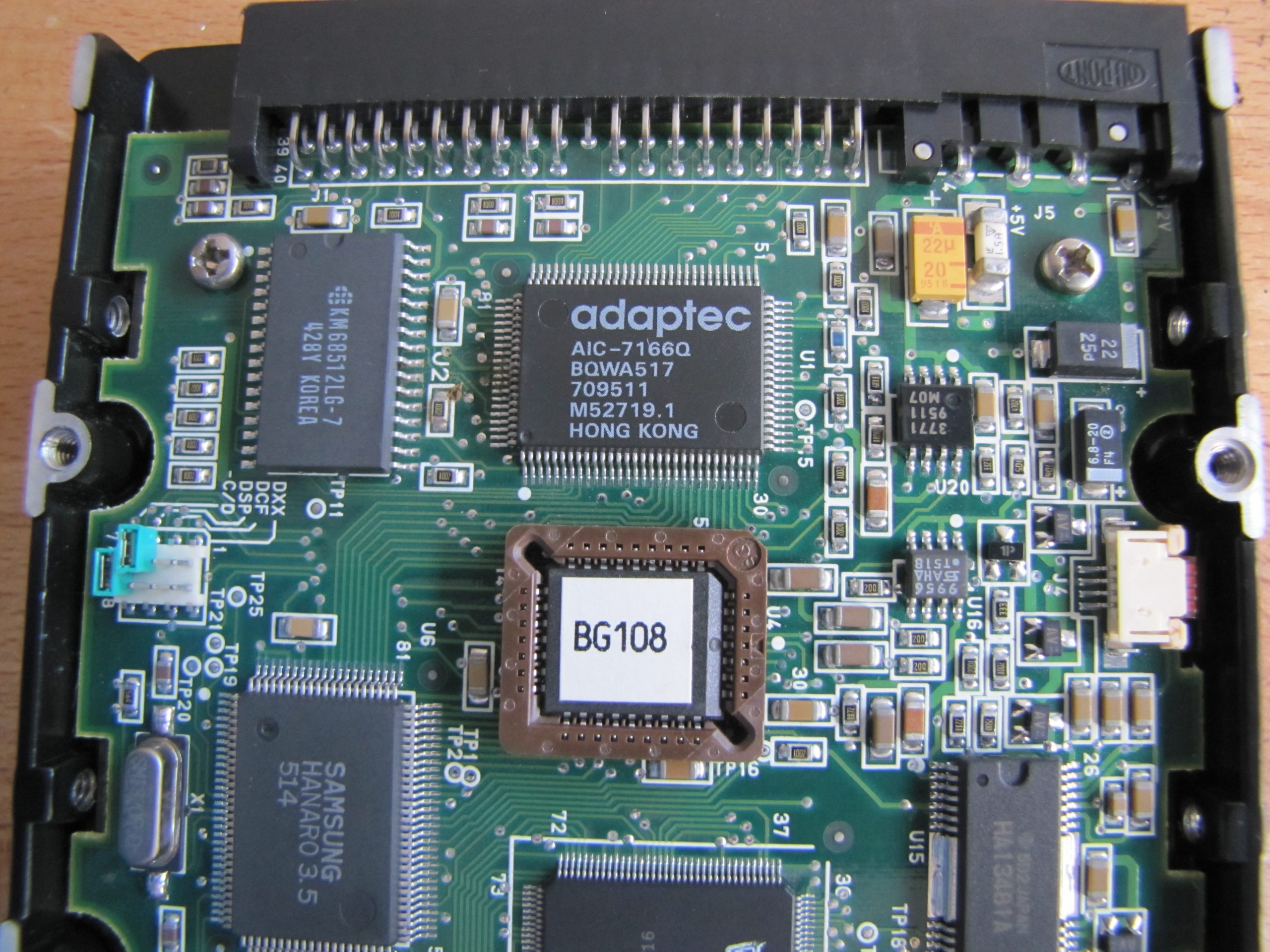


It’s all the same, see! There are some notable IC supplier differences, but these are few in number.

Although being older, the foam survived on this one just fine! Perhaps this one had more love during its lifetime, or Samsung used a differing supplier for this.
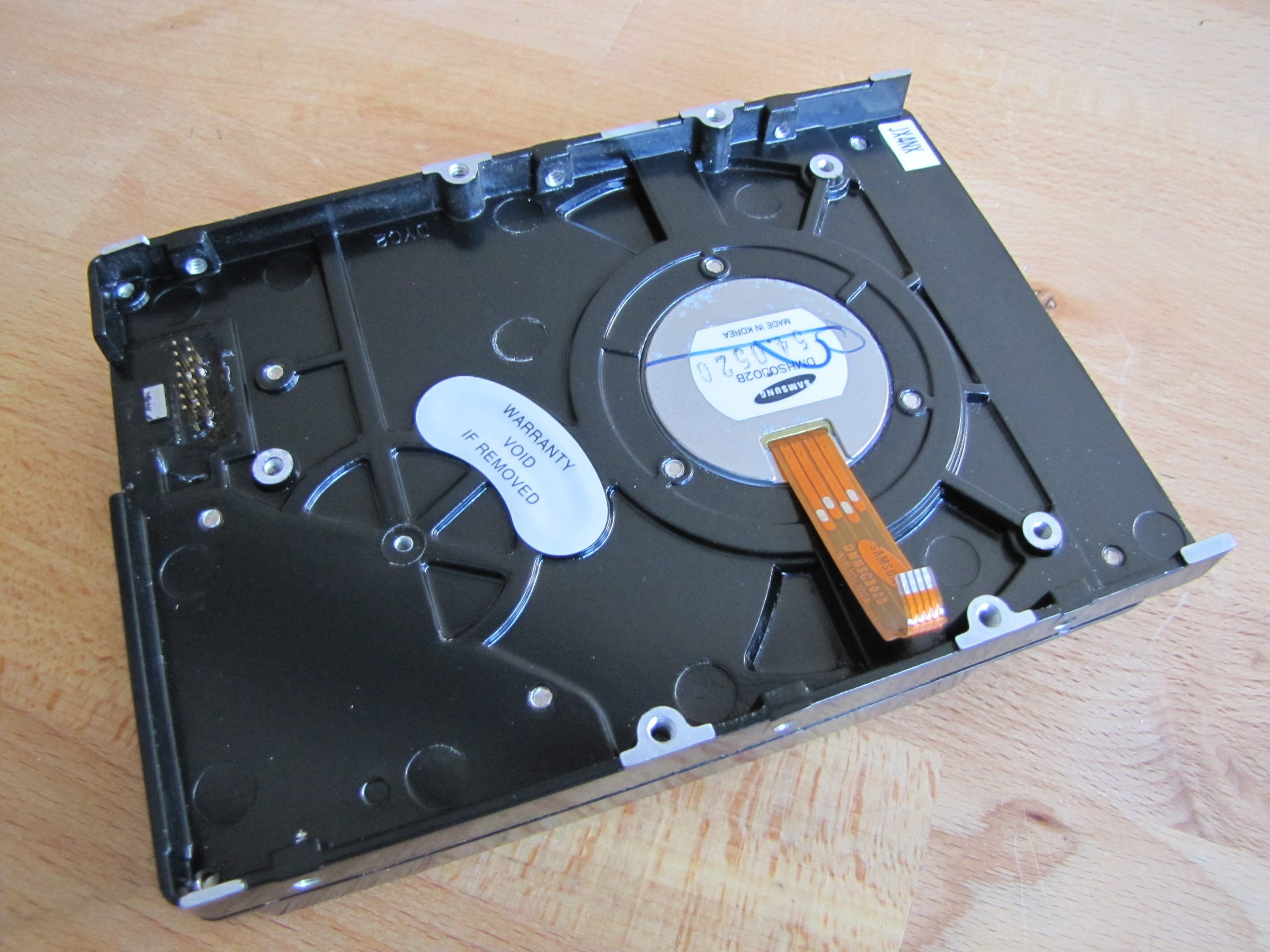
A much cleaner surface means more analysis can be made!

Samsung supplied their own spindle motor for this one. Perhaps they couldn’t meet the internal demand requirements, or it was simply cheaper to involve JVC as an external supplier. Nonetheless, it’s interesting to witness.

An airhole being hidden under the PCB isn’t the most common solution anymore, this being present on these models just under the warranty void sticker on the base. The head-stack pin array connector is rather sloppily sealed.

Looking under the top plate reveals the two hidden screws which were previously removed. There’s a silica gel packet found on the roof too, alongside a very annoying random hole covered by a sticker on the side.
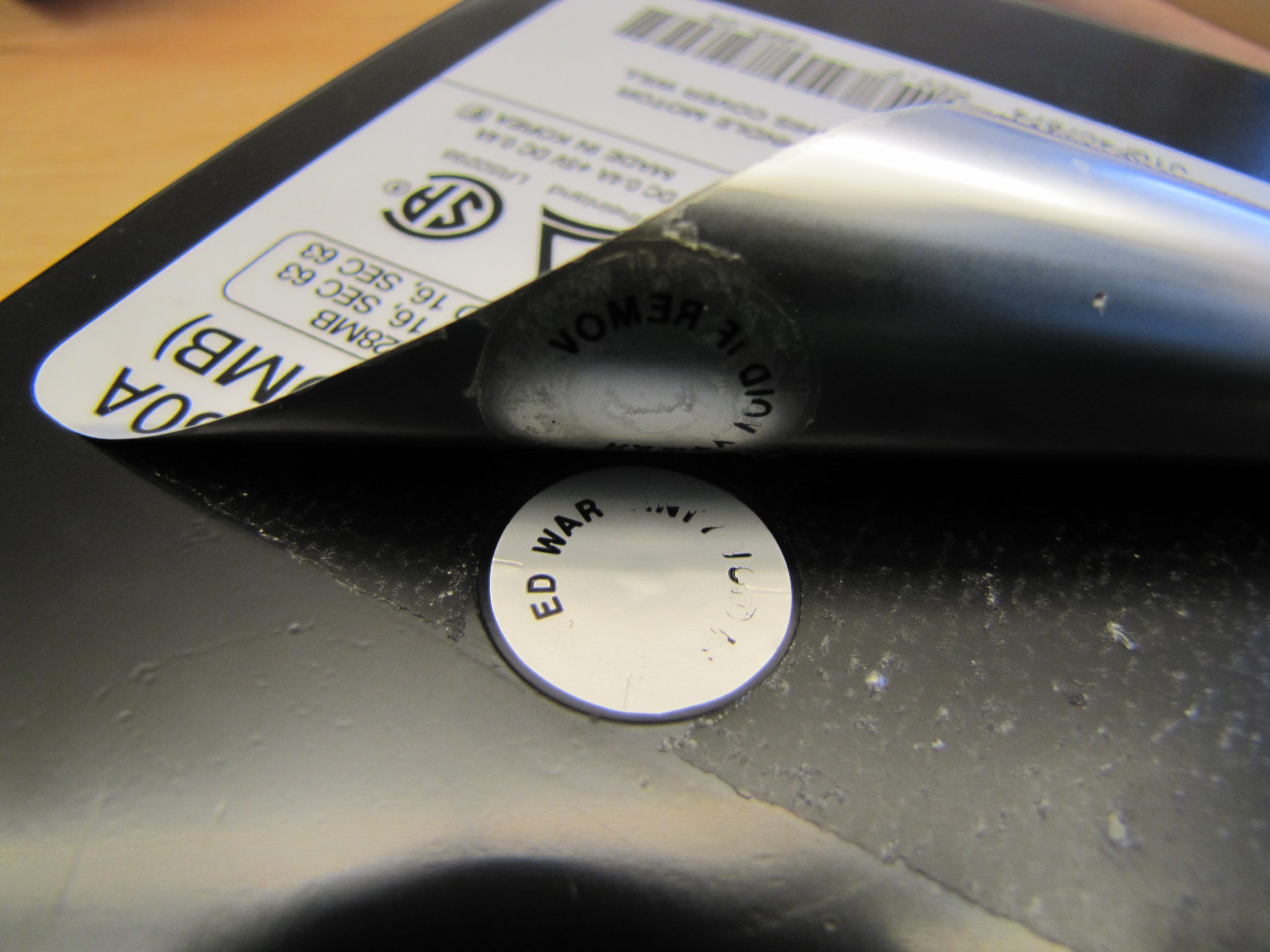
The warranty stickers are in English on this one! Strange.

The same, but with two platters this time!

The wire connecting the heads to the assembly are green this time, instead of a bright orange with the SHD-30280A.

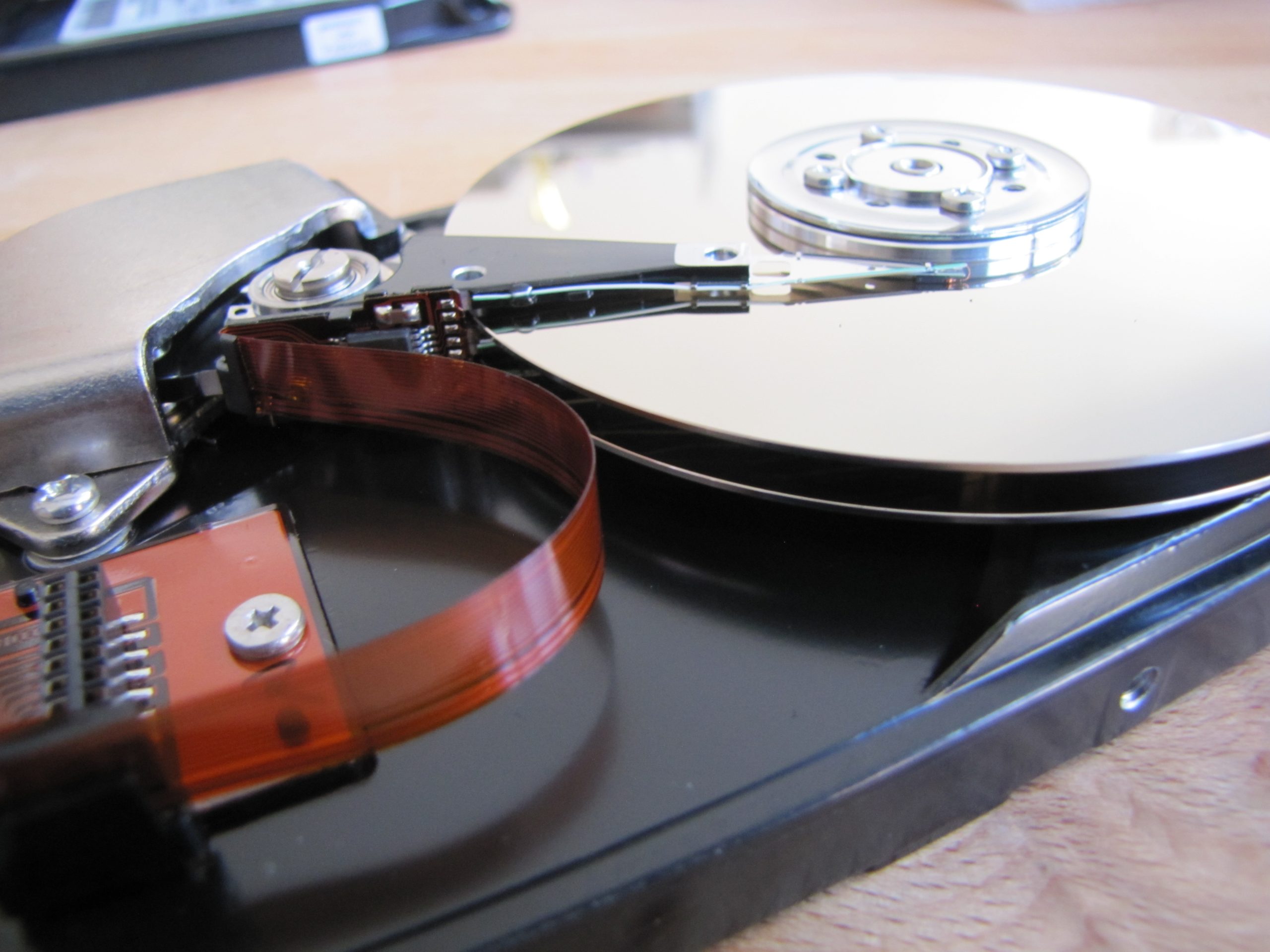

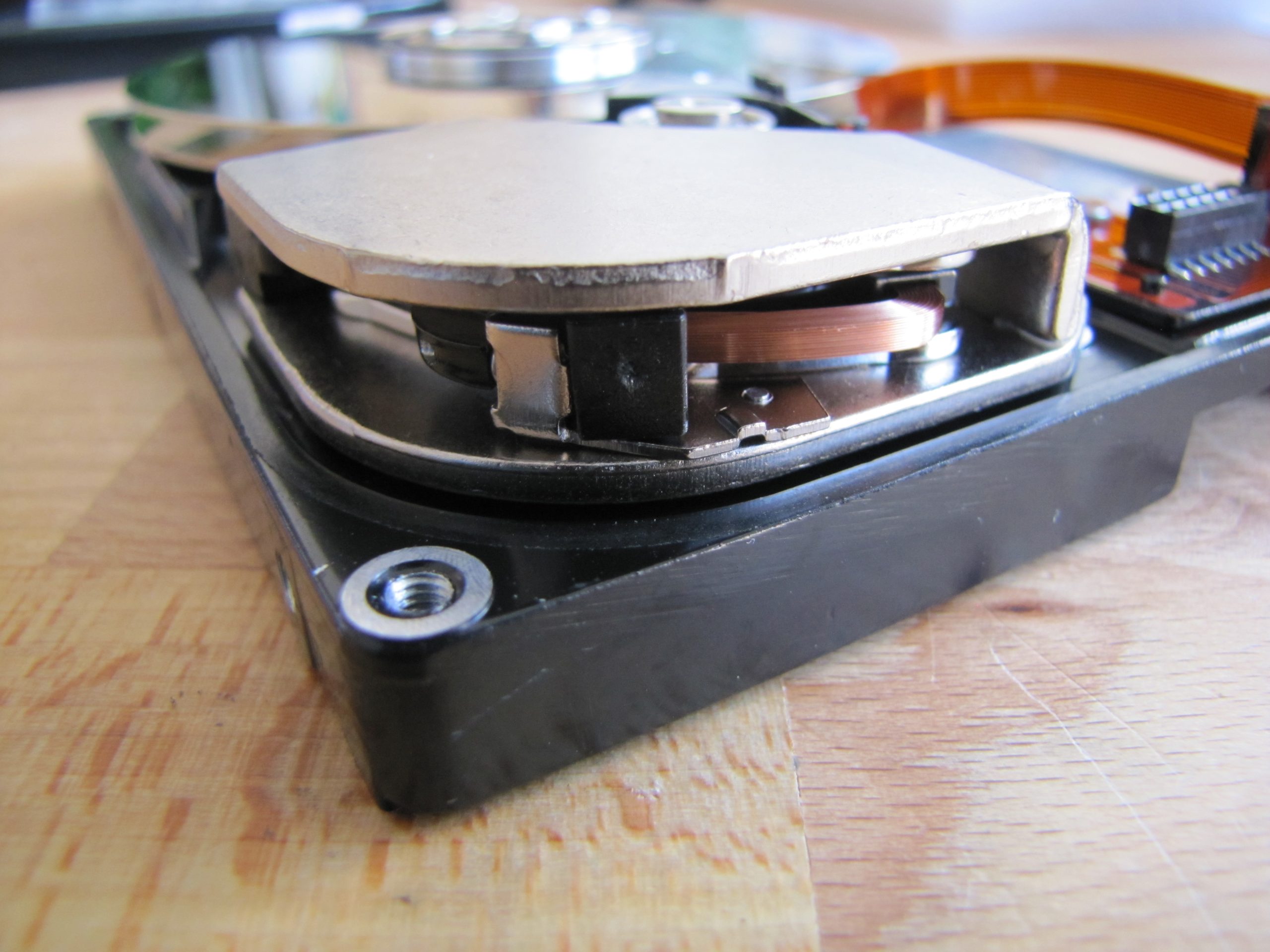

Moving Forwards…
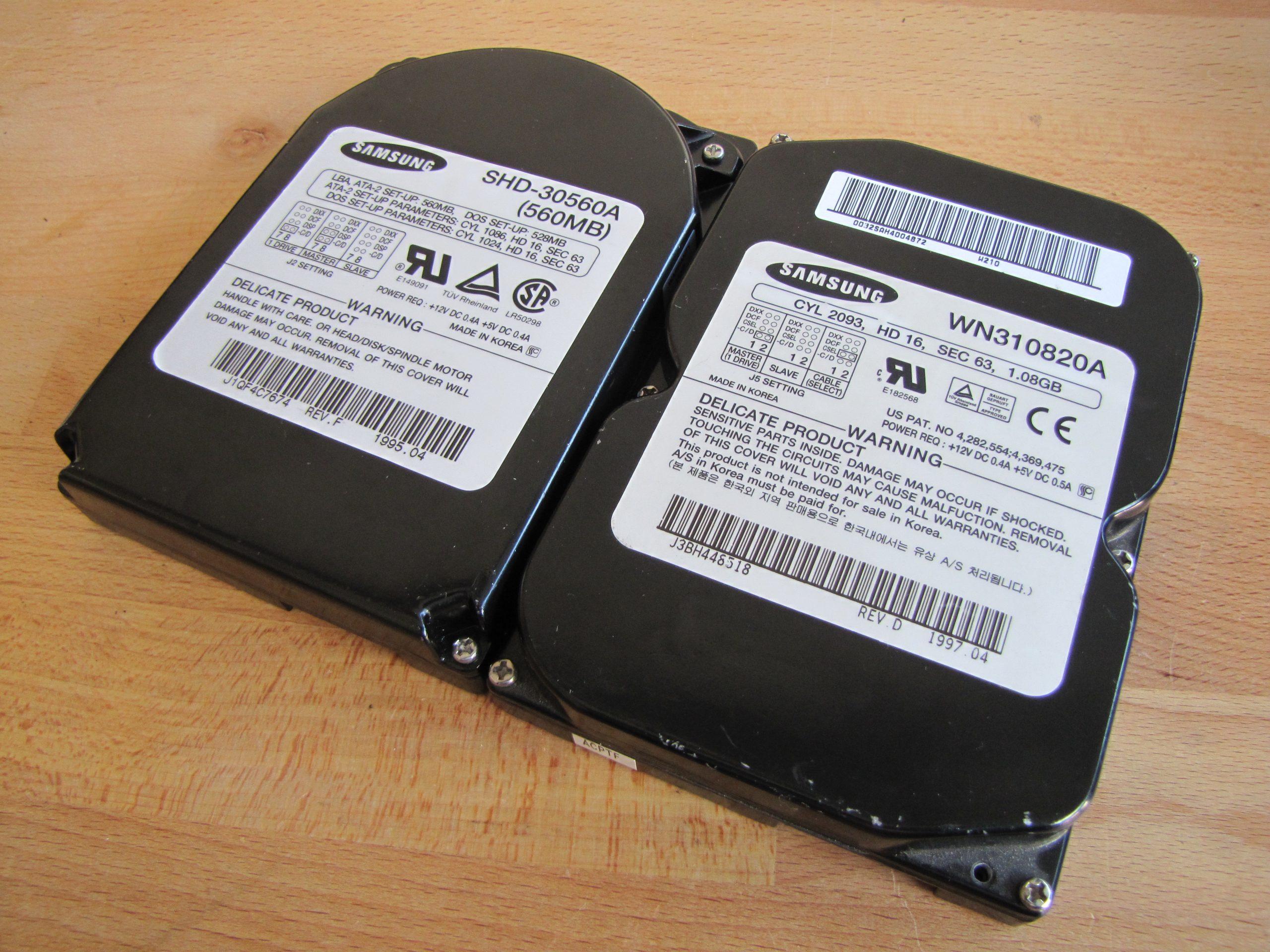
Samsung would end up improving on their designs with the follow-up series comprising of new models with the codename “Winner”. This was clearly a much more successful result, claiming influence in future designs for at least a decade. It remains to be seen how well they hold up over 20 years later, but their shining moment is yet to come.
If you missed the video I made on these drives, you can find it here: